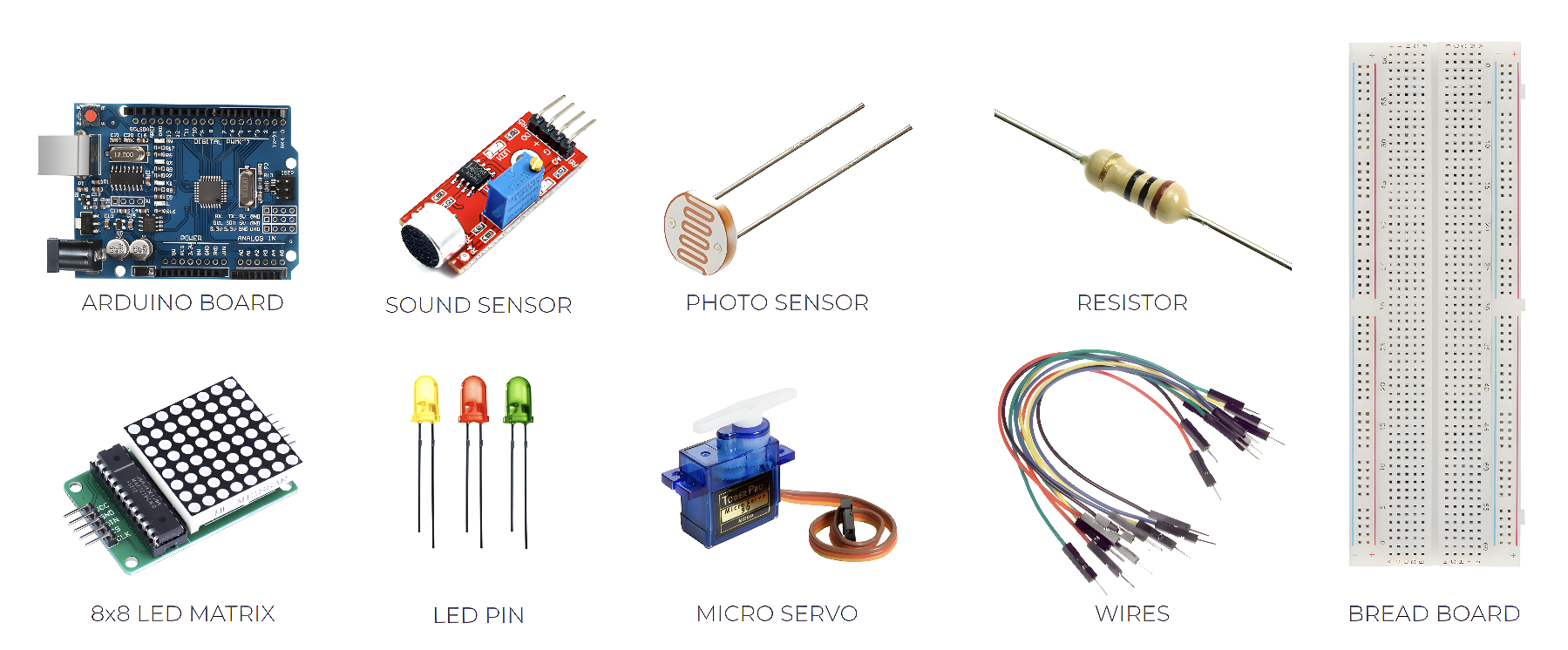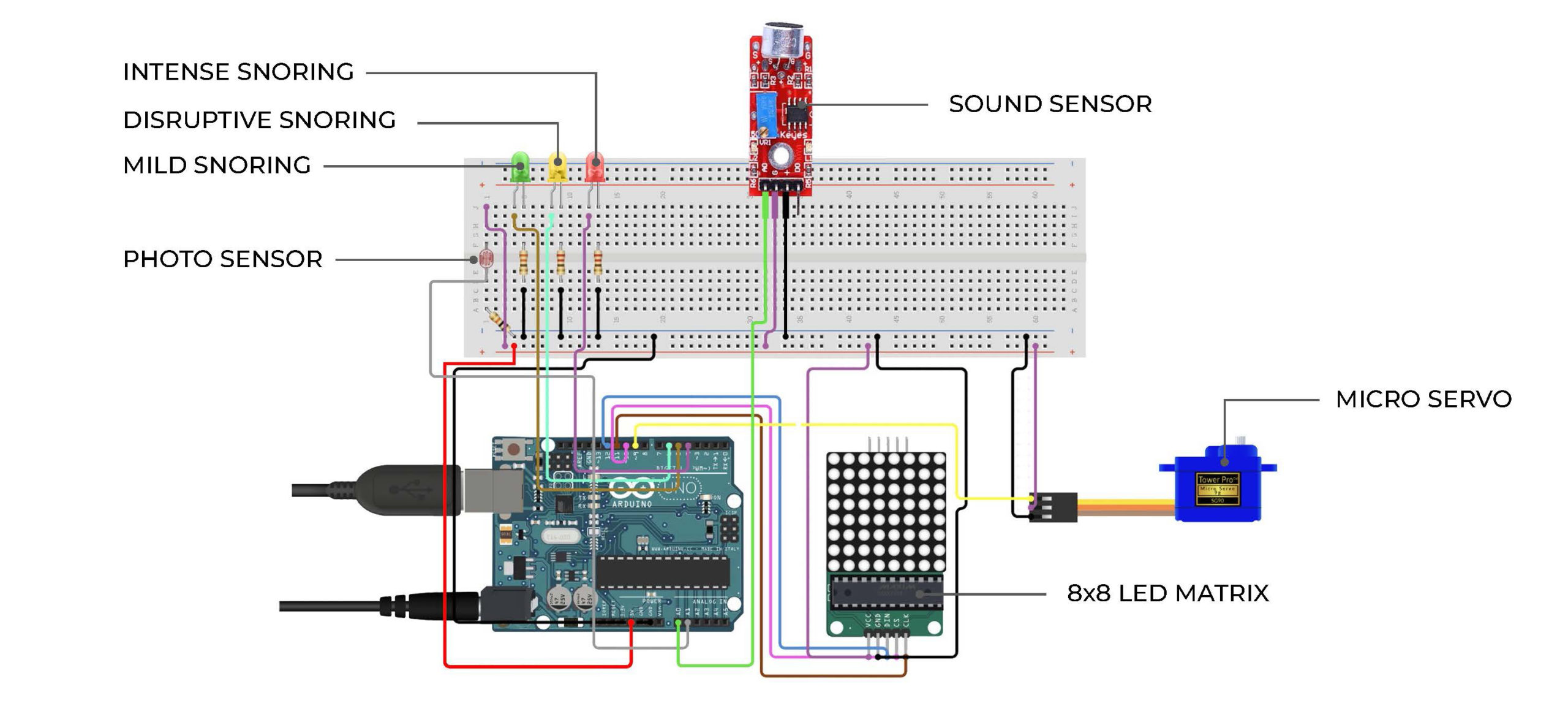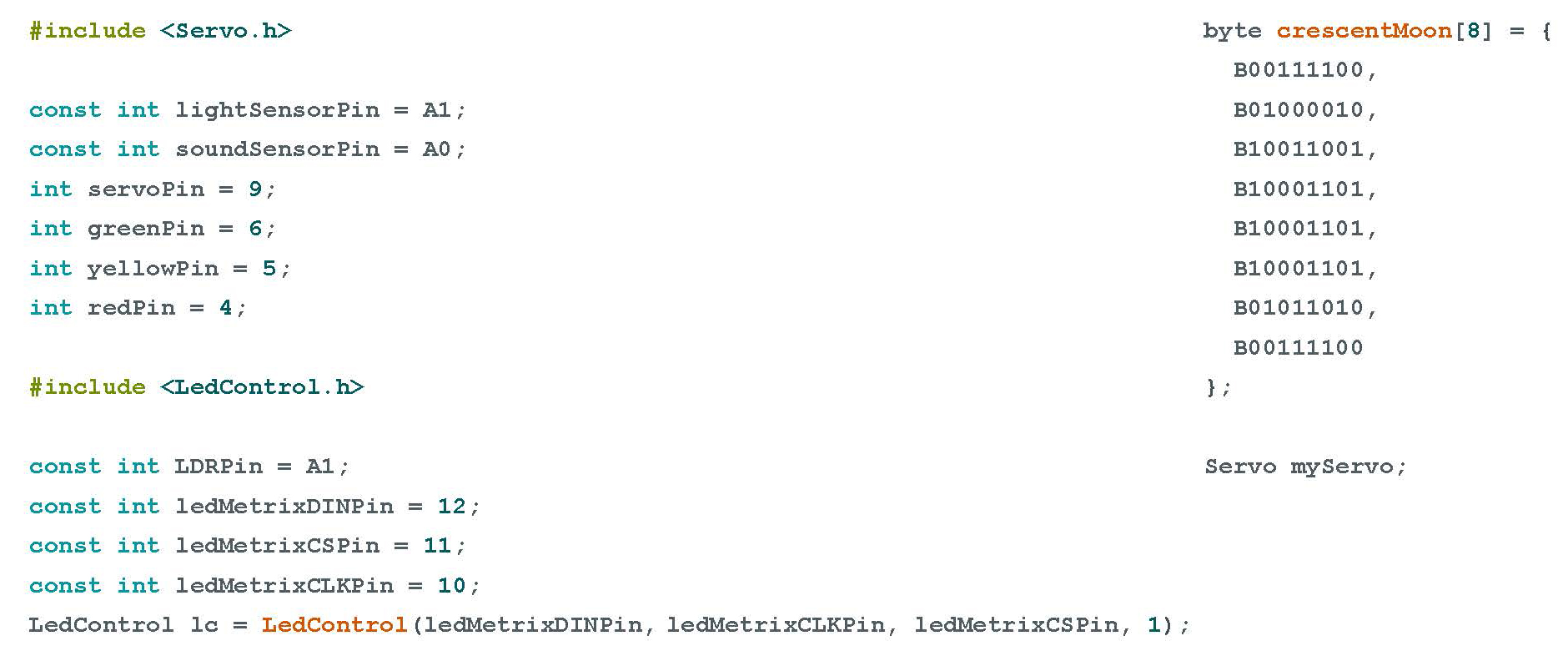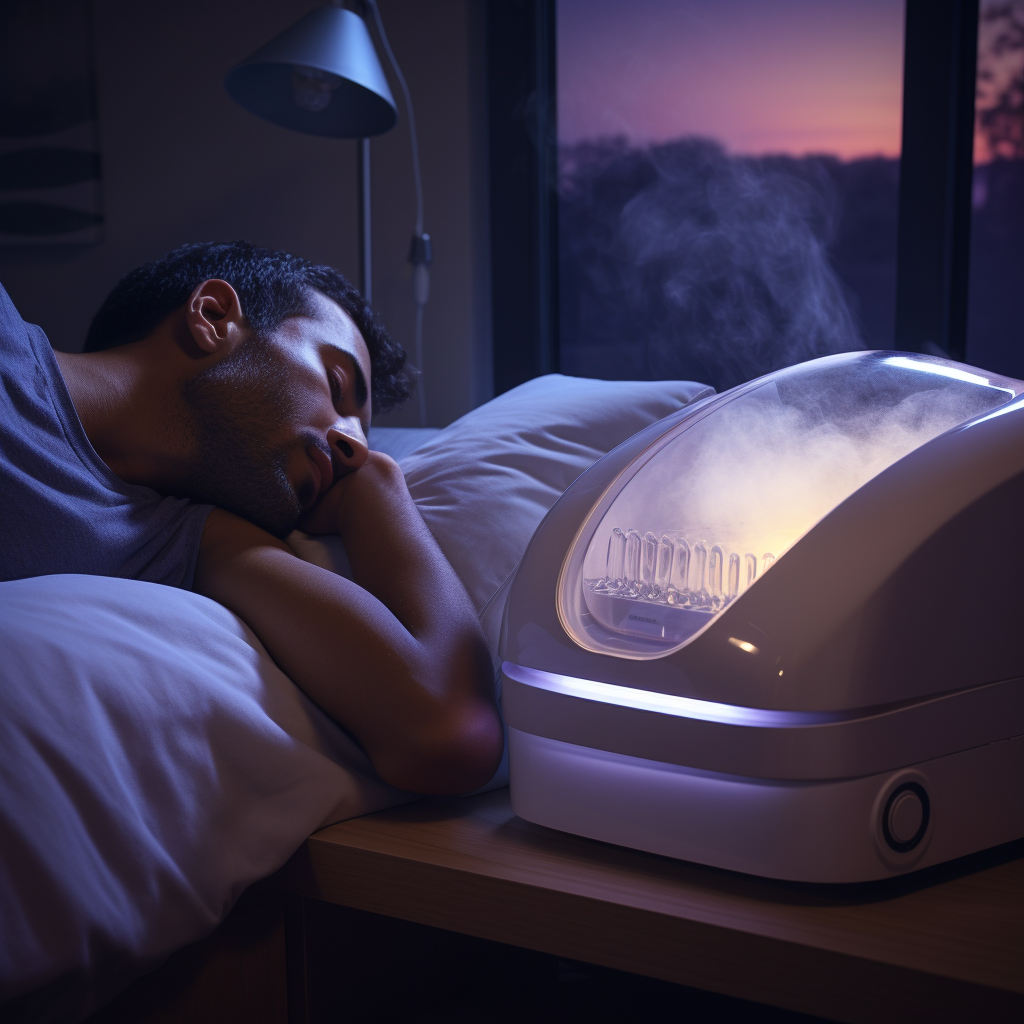“Embrace a new era of restful nights, waking up refreshed and ready to conquer each day. SnoreGuard: Better sleep, Better Life.”
The Snore Guard Wake-Up Assistant is an innovative device designed to automatically wake up a person who is snoring excessively during sleep. This device utilizes advanced sound detection technology to monitor the ambient noise levels in the sleeping environment. When snoring reaches a predetermined decibel level, the Snore Guard activates gentle wake-up mechanisms to rouse the snorer, promoting better sleep quality for both the snorer and their sleeping partner.

How loud is too loud?
The WHO guidelines for community noise recommend less than 30 A-weighted decibels (dB(A)) in bedrooms during the night for a sleep of good quality.(1) Snoring noise is one of the sleep disturbances. The level of noise that starts to have an effect on sleep is around 40dB. The noise of snoring can range from about 50 dB to more than 100 dB.
SnoreGuard Schematic
In a typical nocturnal setting, the ambient noise level in a quiet bedroom ranges from 30 to 45 decibels, creating an environment conducive to peaceful sleep. Conversely, the acoustic output of snoring can escalate to levels between 50 and 90 decibels, particularly in cases of severe snoring.
To address this issue, a sound sensor is integrated into the system, designed to detect snoring noise. The detected noise levels are categorized into three levels, each corresponding to a specific LED light color. Mild snoring triggers a green LED, disruptive snoring activates a yellow LED, and intense snoring prompt the red LED. The red LED, when activated, initiates a response from the servo mechanism.
Activation of the sound sensor is restricted to nighttime hours, facilitated by a photo sensor that recognizes the onset of nightfall. The activation is visually indicated by a crescent moon symbol on the 8×8 LED matrix.
Bill Of Material

Prototype

The prototype was construct by the Arduino kit. The variety of LED colours indicates input noise levels received through the sound sensor. Coding generates the output through green, yellow and red as a step indicator which activates the servo to initiate the waking up action to snorer whilst the red light his lit up.
Coding



Demonstration




Next Step

As the SnoreGuard evolves to address more profound aspects of sleep health, the next step in its development is envisioned as a comprehensive solution to not only detect but also actively prevent disruptive snoring. Recognizing the potential health risks associated with persistent snoring, such as interrupted breathing, sleep deprivation, and even nocturnal activities like sleepwalking
The advanced warning system could be evolved through expressive sound responding and physical intervention mechanism. Finally, to continuously monitor and provide Feedback to the user through mobile applications.
References:
(1) World Health Organization, 2010, World Health Organization website, 30 November 2023, https://www.who.int/europe/news-room/fact-sheets/item/noise

